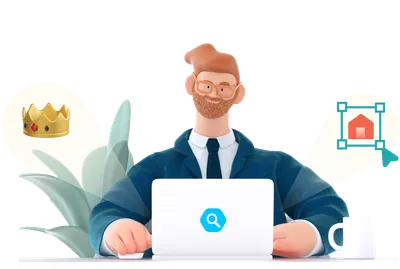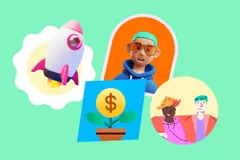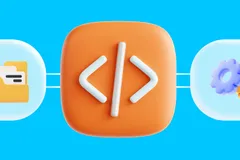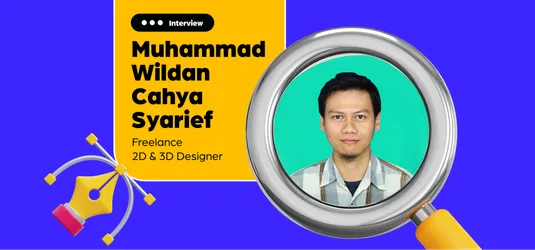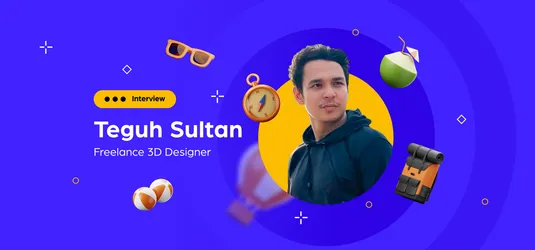
Design Insights: Amit Das, Ex-VP, Design at UrbanClap, Housing.com
Today we have Amit Das to present insights on designing. He has been the ex-VP, Design at UrbanClap.
Written by Varun Trivedi and Dhwani Raval
Recently, Iconscout had a privilege of interacting with Mr. Amit Das, Ex Vice President, Design of India’s leading services marketplace – UrbanClap.
Prior to joining UrbanClap, Mr Das has been associated with varied organizations such as Fab.com, Kria Interactive, FusionCharts and Housing.com. Over the years, he has gained expertise in designing for products to scale and has design management, data visualization, product, interaction, UI/ UX under his belt. Iconscout team members Varun Trivedi and Dalpat Prajapati had interacted with Amit for our interview series ‘Design Insights‘.
Iconscout is curious to know what inspired you to step into the world of designing?
Amit: First of all, thanks for having me over. I think it’s a great initiative you guys have started with ‘Design Insights‘.
I think I stepped into designing without even realising. During my college days, I used to take simple freelance projects to build simple static websites and code simple applications. Back in the days, I’d just put together some design in Photoshop and code it up and send it to the client. When I got my job at Gozoop — Mumbai, I was writing PHP. Gozoop was both a digital service agency plus a marketing product. While working with clients, I started giving inputs to the designs that were done. It was only then when I started designing seriously.
![]() Shortly after, I started my own design agency, Kria Interactive where I used to get clients, understand their requirements (they’d mostly need a website), design and code myself. I gradually built a small team after which I focused primarily on getting clients and design websites. It was the entire experience of running Kria that I realised that I wanted to work on long projects including improvements on what we had shipped before but running an agency model didn’t facilitate it. Running an agency also meant that I spend most of my time in getting new clients and do constant meetings and reviews with them vs actually building something with my own hands. I did not want to sideline designing 2 years into my professional career when I didn’t even start learning it properly.
Shortly after, I started my own design agency, Kria Interactive where I used to get clients, understand their requirements (they’d mostly need a website), design and code myself. I gradually built a small team after which I focused primarily on getting clients and design websites. It was the entire experience of running Kria that I realised that I wanted to work on long projects including improvements on what we had shipped before but running an agency model didn’t facilitate it. Running an agency also meant that I spend most of my time in getting new clients and do constant meetings and reviews with them vs actually building something with my own hands. I did not want to sideline designing 2 years into my professional career when I didn’t even start learning it properly.
It started becoming clearer that I needed to do two things: a) be part of a product company where I would be able to get in-depth knowledge by continuously improving a product and b) surround myself with more designers to learn “UX Design”.
Note, I’m talking about 2010–2012 when these titles of UX designers, UI designers started surfacing in the country. Before that, we were just Front-end designers/ Engineers.
Luckily, I found an opening for UX designer at Fab.com which, then, was the fastest growing e-commerce startup. I interviewed with them and got the job. It was the first time I was actually going to work at a product company, surrounded by techies and builders and designers. I think it was one of the happiest moments of my life. So, yeah, to answer your question, I think with Fab.com I truly stepped into the world of designing for digital products.
Can you tell us with which companies have you been associated with?
Amit: I have worked with Gozoop, Fab.com, FusionCharts, Housing.com and UrbanClap so far.
How working with different companies have shaped your skills and designing experience?
Amit: Working in different companies over 8 years has not only shaped my professional skills but has also contributed a lot to the person I am today.
My first job at GoZoop will always be the most special one. I’m glad to this date that they gave me an opportunity. Looking back, I think I learned how to look at new talent, identify potential and give chances. Ahmed, my boss, actually taught me how to properly design vs whatever the clusterf*ck I thought I was doing. :slightly_smiling_face:
Starting my agency, Kria, showed me what hardship truly is when you try to run a business. I remember I used to naively call myself an Entrepreneur — I was not. I was merely making similar websites for different clients and for the most part of it, I didn’t understand half the things I was selling. It made me realize that I should stop bullshitting and get serious about design.
![]()
Fab.com was the first place where I learned what designing for users is. When I started there, I lacked empathy for users, tbh. I was very output driven and would be very technical in my approach and unfortunately, hold that with pride. I also learned how to work at a true tech startup and that it never is about timelines, processes but people, just people. I made some of my closest friends there and that’s what made work more fun and yeah, we shipped great stuff and users loved our products. Not treating your employees as a row in the excel sheet but true partners in your company who you take care of are one of the most important learnings I took from Fab.com.
FusionCharts was very special. It was the first time when I got exposed to the universe of data visualization, thanks to Pallav, CEO at FusionCharts. He mentored me and became a great friend and is one of the few people I look up to. Professionally, I learned designing for data at FusionCharts and how to manage a set of people for a few projects (I think I was a horrible manager). I learned how designing for B2B works, how SEO works and it changed a lot of my stupid perspectives.
If I have to summarise my learnings from Housing.com in one statement, it’d be this: DO NOT HIRE 50+ DESIGNERS AT A STARTUP. However, having so many designers in the team also meant having a warehouse of exceptional talent under one roof and I learned so many things from each and every one of them, every day. I got better at hiring, managing people (I hope), understanding product, working with business teams, BI teams and more. It was a phenomenal experience.
With UrbanClap, I got lucky. I got to do two things:
- I got to truly exercise all my learnings, experiences that I had accumulated over the years and
- Learn from an exceptional set of people in founding team, other VPs, engineering, product, business, customer experience on a daily basis.
I learned how to run a tech startup while continuously growing business. I learned how to hustle your way through to ship things and a thousand other things that helped me shape to become a person building products vs just being a design head.
Considering the design culture and the latest trends, what is the crucial thing that has to be taken care of while designing something?
Amit: Mmm… there’s no easy way to explain this. I think you need to know the purpose of design, to begin with.
There are two ways to look at it:
- Understanding the purpose of your users
For example, you’ll not be able to make a good landing page to gather user details, if you refrain from understanding the true purpose: lead generation. If you focus on just the aesthetic look and feel and typography, layout and not much on putting value propositions, good web copy and content writing, the design will fail.
For example, you’ll not be able to make a good car comparison interface for mobile devices if you fail to understand the user — what do they want to compare? dimensions? specs? or just summaries of why should you buy car A vs B vs C…
You’ll not be able to properly design this solution if you think it’s just going to be a table with columns filled with car specification data.
![]()
- Understanding if it’s a design problem, to begin with
There was this company A (name hidden for obvious reasons) who wanted a blog re-design. Why? Because it looked very different from the main website and apparently a lot of traffic bounced. The blog just shared the logo and colours from the main website.
The designer assigned to this project immediately jumped into the opportunity of a ‘re-design’ without completely understanding the problem. A re-design was done, took a few weeks to go live. Result? NO IMPACT. Why? Because no one worked on improving the content!
As designers, it’s very important to get to the root of purpose and understand if it’s a “UI/UX” design problem to begin with. Is it a problem that can be solved with other levers that take less effort?
Having a varied experience, which job according to you is/was more self-satisfying than the rest?
Amit: I loved working with all the companies to date so it’s really hard to answer this. However, I can tell you about the most dissatisfying one — running Kria Interacting. The fact that after a point, I was basically doing client account management and not really designing anything was killing me inside and so I shut it.
Can you please share your experience at UrbanClap?
Amit: I was using UrbanClap much before I joined the team and I was aware of the kind of product they were building and I found it amazing — one place to get all my repair work done.

The company was growing but lacked good product design and I felt the urge to join them. After a series of conversations, I realised it to be a place where I could use all my experience that I have gained over 6 years and help build a product that will impact thousands of lives of service professionals and average consumers.
I never thought of UrbanClap as another startup trying to make its mark. I think it’s a movement to standardise services marketplace in India — which is a ridiculously tough nut to crack. It’s also a movement to create a million plus jobs for service professionals in India.
I feel privileged to have worked with some of the smartest minds in the industry while they entrusted me as a partner to achieve this vision and I’m extremely grateful for that.
When you joined UrbanClap, there was no design team. How has that scenario changed in terms of design teams? Who are the members of your team?
Amit: When I joined, we had Mridul Gupta as the resident designer in the team who had joined a few months ago. There was another designer who was on his way out to explore freelancing.
I wanted to build a team of Product Designers to be very specific and not UI designers and not UX designers. I wanted to build a team who would be comfortable working with data, understand business and strike a good balance between designing for users and business growth.
After the first few weeks of delivering design value that showed impact in our business, we earned the team’s seat at the table to become one of the most important functions of the organization.

The team comprises of six members at the moment, including me. We have Amit Jaglan & Yogita Abrol as Senior Product Designers. We have Mridul Gupta, Fozail Ahmed as Product Designers, Uditsmith Thakuria as a Jr. Product Designer and I head the team as VP of Design.
All the members of the team, including myself, are extremely hands-on and work on projects end to end, define successes and continuously keep improving our products. We have some great practices stitched into the team’s DNA: thinking users first, doing regular customer calls, always being data aware, internally promoting design’s positioning to set the direction of the company, doing regular design sprints to take quick cracks at problems, always measuring design and iterate and of course, have fun while at it.
What are your thoughts on UX designing? Where do you see India in this industry in future?
Amit: Back in 2010, when I started, people around me would talk about something called “Design, UX, Human Centered Design and blah blah” becoming very important in the west and that the wave is going to hit the country soon. And, it did. Unfortunately, most of what we ended up learning got influenced by the west and we never developed a way to Product Design for Indian users.
![]()
I feel, as a community, we focus a lot on “how does it look”, “how popular I am or my shot is” vs “hey, see this is so easy to use and people love it”. So, if you ask me how ‘UX’ looks like in the future, in the country’s context, here’s my take:
“Inevitably, new technologies are going to come in. Inevitably, the devices, mediums one designs for today, will changes. It’s just a matter of time. When that happens, if we have to keep ourselves relevant, we cannot be seriously making 1000s of card animations and screen transitions on dribble. Because that won’t matter.
We need to really work hard as a community to learn to solve real user problems, real business problems using design, using systems. So, either we do this, or wait for some other community to set the guidelines to design for new technologies once again”
There has been a notable shift since 2010. Designs have been matured from being focused on look-and-feel to getting shifted to the understanding of the systems. Designers are understanding the value of good designs that can shape how the company works.
Who has been your inspiration throughout your journey?
Amit: A lot of people have inspired me really throughout my professional journey and I took inspirations from both my positive and negative experiences.
I remember when I was firing one of the designers at Housing, the guy broke down into uncontrollable tears in front of me. I, like an obnoxious asshole, didn’t get affected by it and still went ahead with my decision. It was much later that I realised that I was at fault — I should have been a better manager, should have done more frequent 1 on 1s and should have mentored him better. That experience inspired me to work hard to become better at managing people, training them, help elevate them, help them become better at their work.
![]() When I joined FusionCharts, I asked for top-of-the-line MacBook Pro, a Thunderbolt display and all the top-notch gear one would require to look like a great designer. I didn’t understand frugality. Sometime later in 2014, I recalled my father’s journey. When he started his business, he could not afford to buy a soldering iron to fix chipboards so he’d go to a nearby construction area, find a TNT iron rod, heat it in coal and then use it to solder wires. He made the best of what he had at hand.
When I joined FusionCharts, I asked for top-of-the-line MacBook Pro, a Thunderbolt display and all the top-notch gear one would require to look like a great designer. I didn’t understand frugality. Sometime later in 2014, I recalled my father’s journey. When he started his business, he could not afford to buy a soldering iron to fix chipboards so he’d go to a nearby construction area, find a TNT iron rod, heat it in coal and then use it to solder wires. He made the best of what he had at hand.
My father still inspires me to do best with what one has at hand and to stay humble.
Bezoz’s work style and even my experience at UrbanClap taught me that when you’re working in a Company, you’re not working FOR a company, you’re building it as a partner. Try to save, try to save those few dollars. It goes a long way.
As a designer, I have always been fascinated by products that changed how I live life on a daily basis. And more than any individual, products inspire me. Google Maps, for instance, is one app I can’t live without and I blindly rely on it and it actually has made millions of lives easier. That inspires me.
We would like to know something about your venture ‘The LittleBrush”
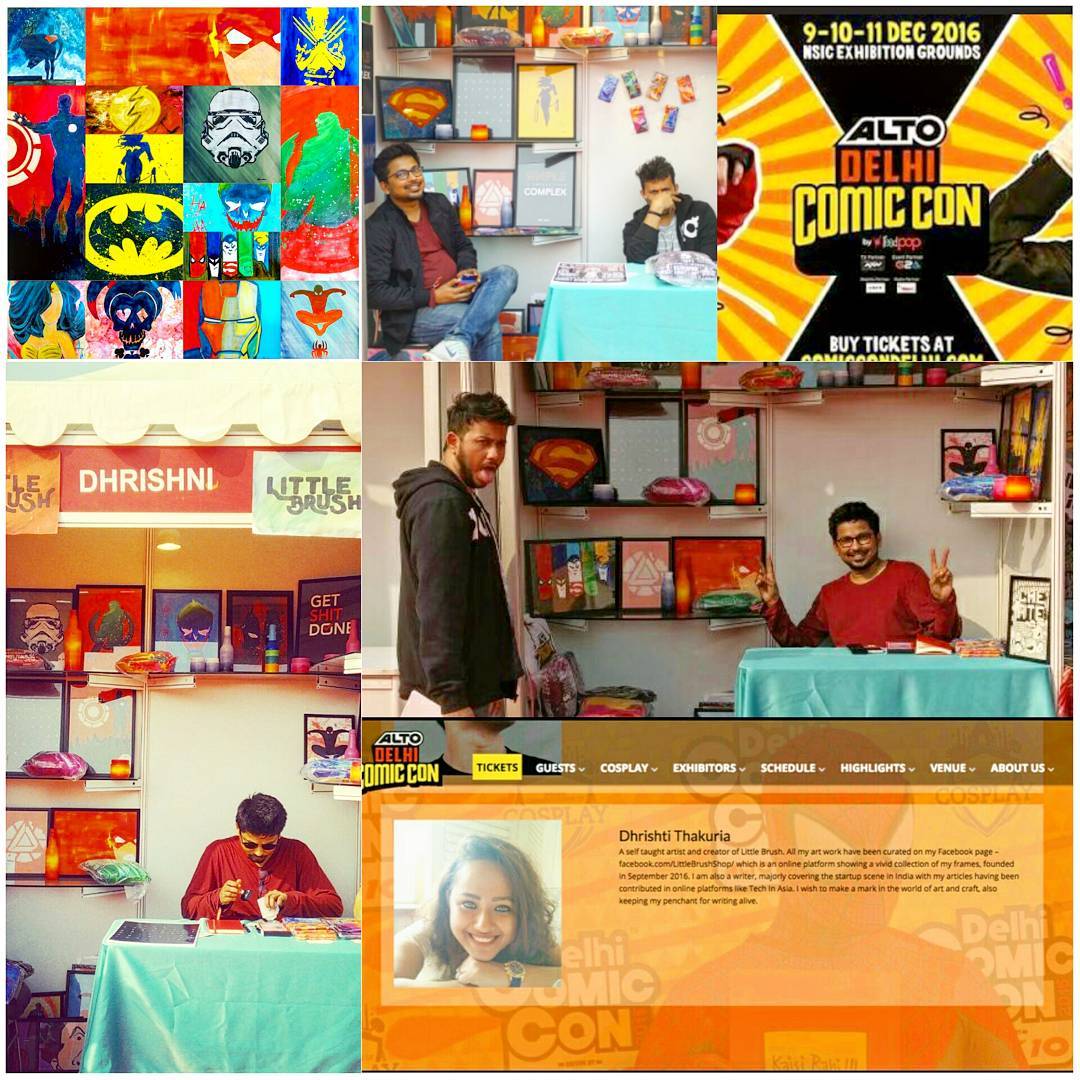
Amit: Littlebrush was started by my wife two years ago to keep our hobbies alive. I had a lot of beer bottles at my place (few hundreds) and I didn’t want to throw them away. So, I started painting them. One day Dhrishni, my wife, showed interest in painting them and I gave her a small brush to start with — hence, the name. We participated in ComicCon, Delhi in 2016 where she hand-painted many Superheroes and we were sold out by the end of the event.
![]()
Unfortunately, we have not been able to dedicate much time to LittleBrush ever since. Hopefully, we’ll be back at it.
How important is your hobby in your life? How has it impacted your profession?
Amit: I like to think I have a creative mind ? It comes with the usual hazards — you want to do a hundred things but you don’t have time to do all of them.
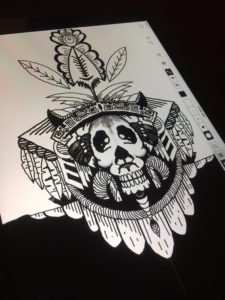
Hobbies for me are a small set of such activities that I can possibly do regularly instead of trying to do 10 and none religiously.
I love to read books and always carry one with me — a physical one at my work desk and by my bed and a Kindle when I’m on the move. It helps me continuously broaden my perspective while learning from great minds.
I love to cook and try to at least cook something once a week. I miss the food my grandmothers used to make, pickles they’d keep for months before consuming and a lot of things I experienced in my childhood being brought up in a small town and I know that the generation after mine will not experience any of those. Cooking is a way for me to preserve some of that and pass on.
![]()
I like to doodle and paint abstract pieces sometimes. Unlike designing, where you’re supposed to answer questions, with art, I am free to do whatever the f*ck I feel like. It’s amazing.
We are sure that your word would mean a lot to the aspiring designers, what advice you would want to convey to them?
Amit:
Practice, practice, practice.
It doesn’t matter if you’re an aspiring designer or a seasoned design lead. If you’re not practising, if you’re not designing with your own hands, you’ll quickly become obsolete. There are absolutely no shortcuts around this.
We are grateful to Amit for managing time for us in his busy schedule and answering our questions. It had been a great experience interacting with him. We wish him great luck in all his future endeavors. Do you guys have any questions? Do write them below in the comment!
Related Blogs
Access the world's largest Design Ecosystem: Assets, Integrations, and Motion.
